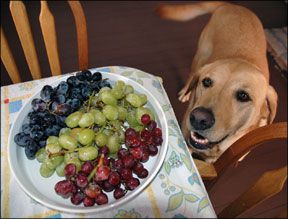Dog Safety in the Home
The Problem: There are any number of dangers for your dogs at home, including things they can eat, things they can chew, things they can get caught in, and things that can fall on them. Hazards outside are even greater, even in a fenced yard, including malicious mischief, theft, poisoning, attack from predators, and accidental escape or release.
Young puppies are at greatest risk, since they explore the world with their mouths, and because they are smaller and more vulnerable than adult dogs. Puppies chew cords and get electrocuted. They get into garbage and household cleaners. They are more likely to ingest multiple pieces of chew toys as well as non-edible objects and become impacted, requiring emergency surgery.
Adult dogs are not immune, however. Nuisance barkers often get released from their yards, shot or poisoned. Dogs escape their yards by jumping over, digging under, or slipping through the fence when the pool cleaner leaves the gate open. They also get stolen for resale, breeding, and lost pet scams.
Solutions: First and foremost, keep your dogs indoors when you are not home to protect them. If they must be left outside, make sure your fence is solid and secure. Also make sure your dogs are not disturbing the neighbors, at risk of escaping, or able to fall into the hot tub or swimming pool. Finally, padlock the gates religiously.
Indoors, a puppy should be crated, or kept in an ex-pen or puppy-proofed room during your absence. Any new dogs in our home are crated when we are not there until they are at least a year old, at which time we give them gradually increasing periods of freedom as they demonstrate their maturity and ability to handle house-freedom privileges.
In addition, baby-proof latches on cupboard doors, covered garbage cans, and similar management tools can protect hazardous materials from pooches who have a penchant for snooping where they ought not.
For a more comprehensive guide on keeping your dog safe, download Dog Dangers now.



